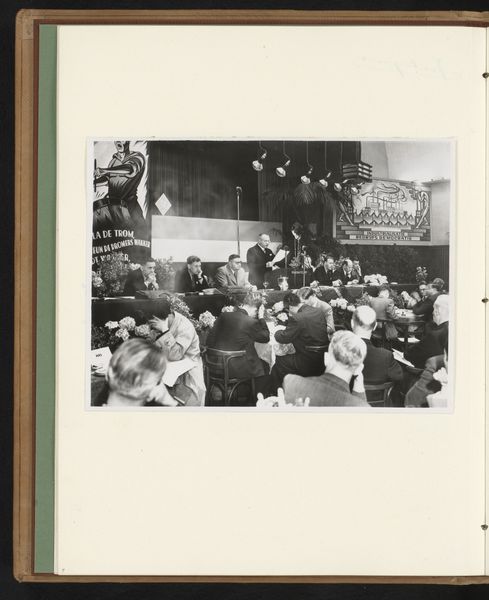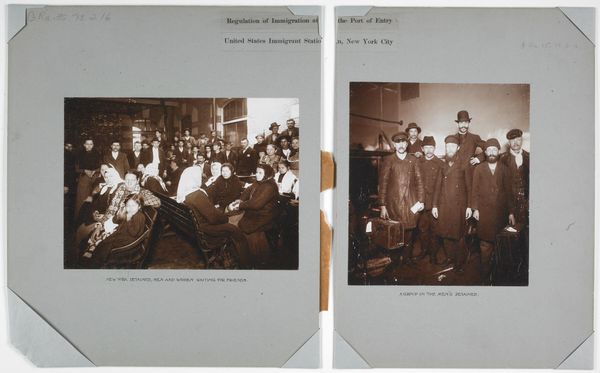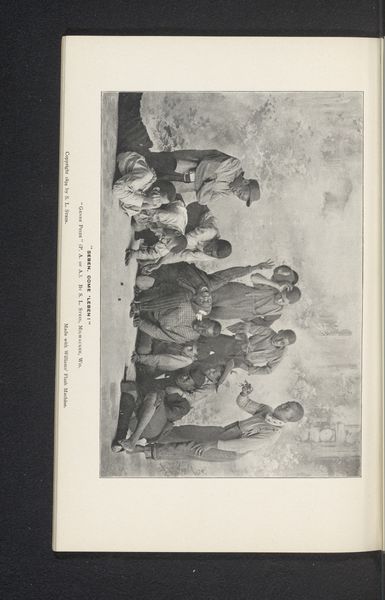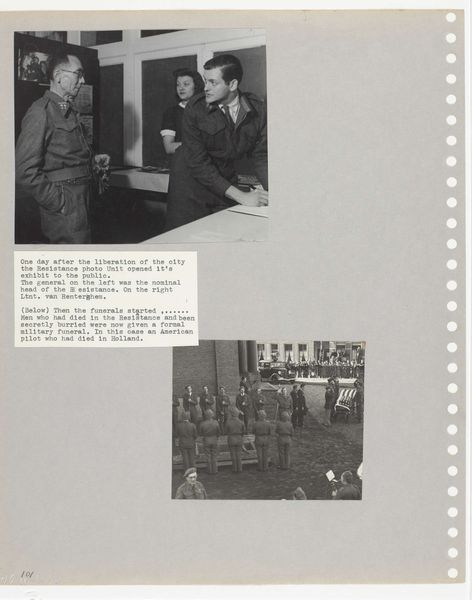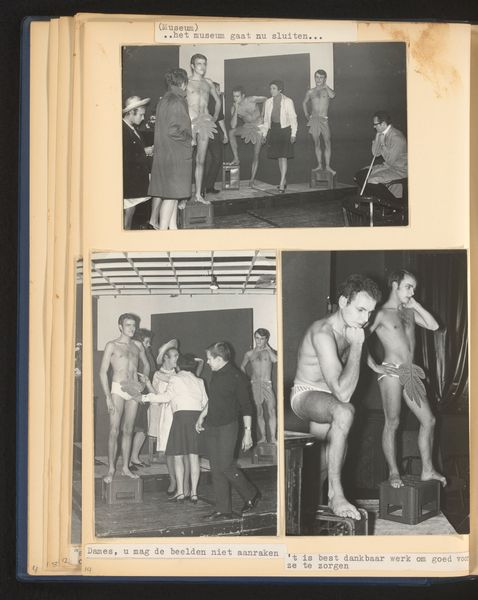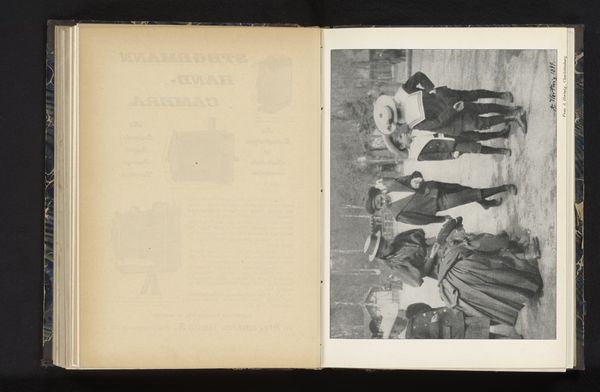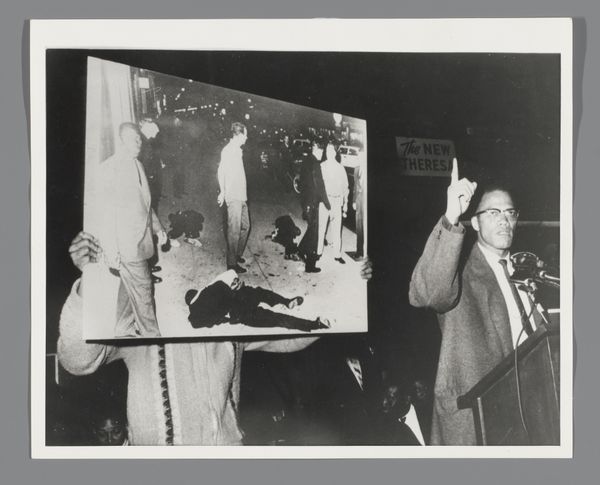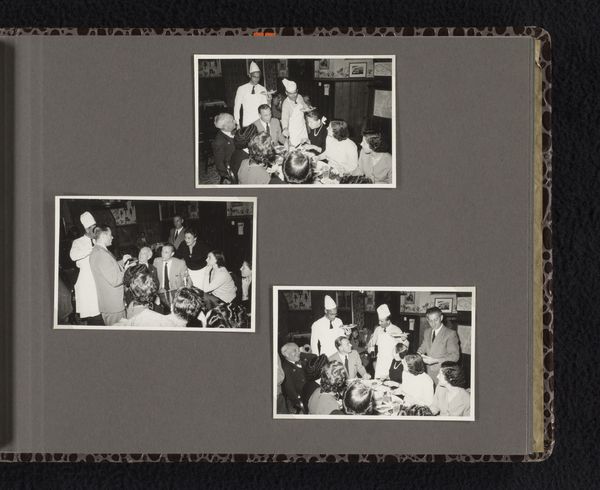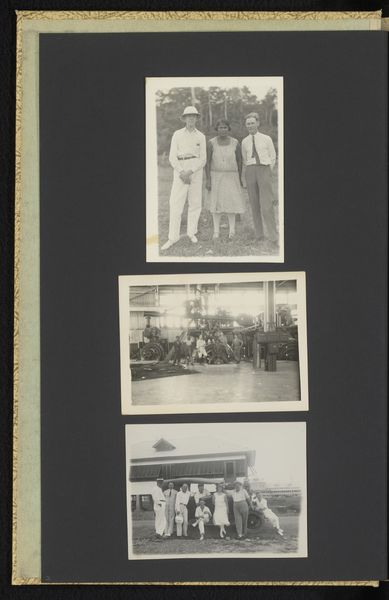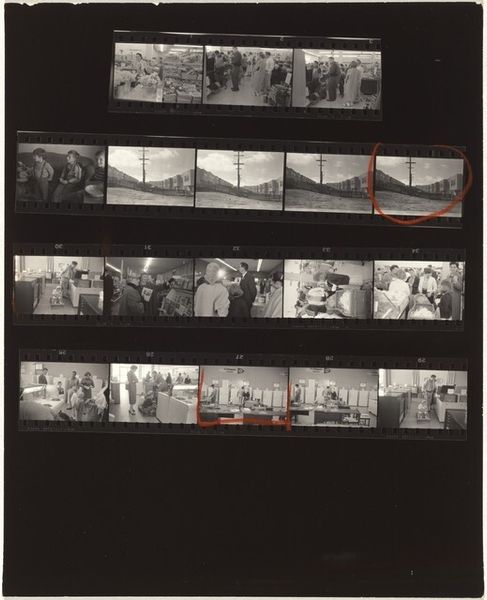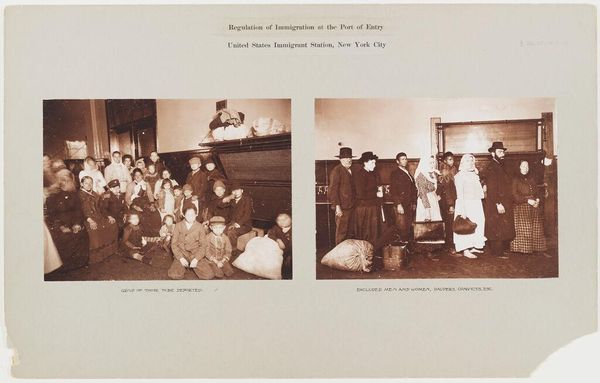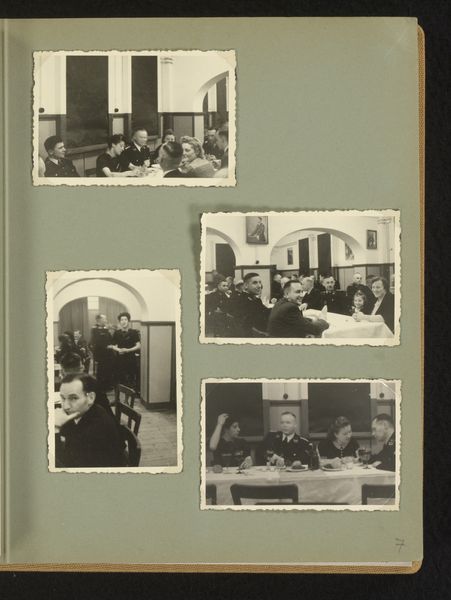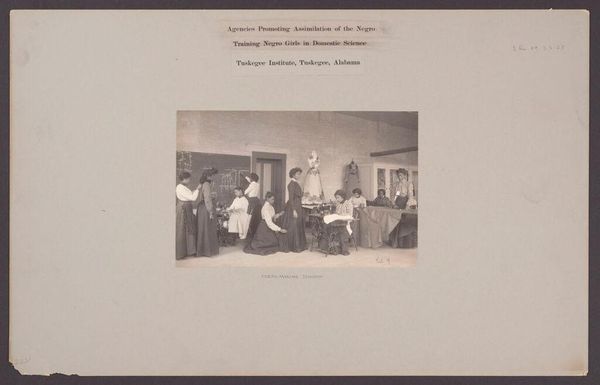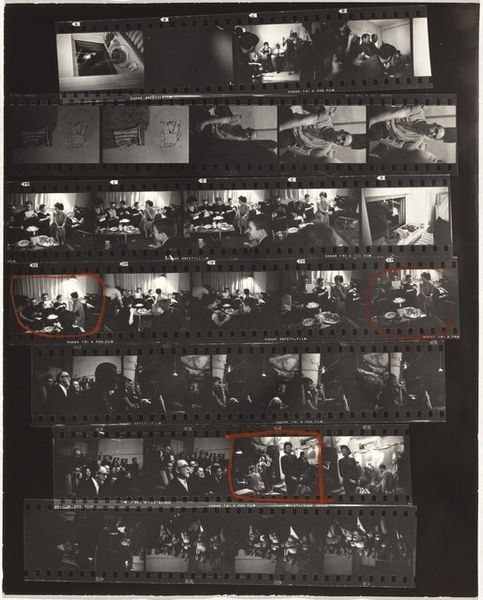
performance, photography
#
portrait
#
aged paper
#
homemade paper
#
performance
#
ink paper printed
#
paperlike
#
photography
#
printed format
#
folded paper
#
thick font
#
paper medium
#
historical font
#
columned text
Dimensions: height 90 mm, width 140 mm, height 270 mm, width 205 mm
Copyright: Rijks Museum: Open Domain
Curator: Let’s explore "Cabaretvoorstelling COC van 'De Schakelkrant', 1969" captured in a photograph from 1969, part of a larger compilation by Cees Bolier. My first thought goes to what might have been going on during the performance. Editor: The grain and the contrast in the black and white images speak immediately to the era. The photograph looks somewhat posed and a little raw—grainy—evoking a certain period aesthetic. It has the immediate appearance of documentary work. Curator: It's intriguing how they've used theatricality. One image shows what looks like a person in a makeshift bird costume reading to an audience; a playful critique perhaps? Editor: Precisely! This costume acts as a strong focal point—though rather awkwardly rendered; and certainly striking against the comparatively sober expressions of the seated spectators. The juxtaposition highlights the performative aspect, emphasizing contrast, and invites curiosity. Curator: In the lower image, we see the cast on a stage, and what's telling is that below this photo there is printed text stating in Dutch, "And those were Bob, Peter, Cees…" followed by other names. There's something intimate in its candidness; the materiality and layout feel very DIY. It hints at the strong communal foundations supporting this cabaret. Editor: The names inscribed, coupled with a rather flatly rendered stage arrangement, serve a crucial function. Note that the black backdrop, framed by the white, creates an abstract shape, which isolates the players as individuals; or possibly parts of a unit. Curator: It captures not just a performance, but an act of defiance and self-expression during a time when homosexual acts were still illegal in many places. The puppet in the first photo makes you think about what it symbolizes: "homos are just like people", implying an assertion of dignity through the absurd. Editor: Symbolically rich material, particularly for its era. Its message has potency derived less from masterful artistic technique than from pure, unfiltered social intent. Curator: Looking closer helps me remember the social change. This is a slice of LGBTQ+ history—testimony to courage in art. Editor: I now better appreciate the photograph's layers through our insights together, observing how this item documents the group dynamics of this time and movement, embedded in a simple photograph.
Comments
No comments
Be the first to comment and join the conversation on the ultimate creative platform.
